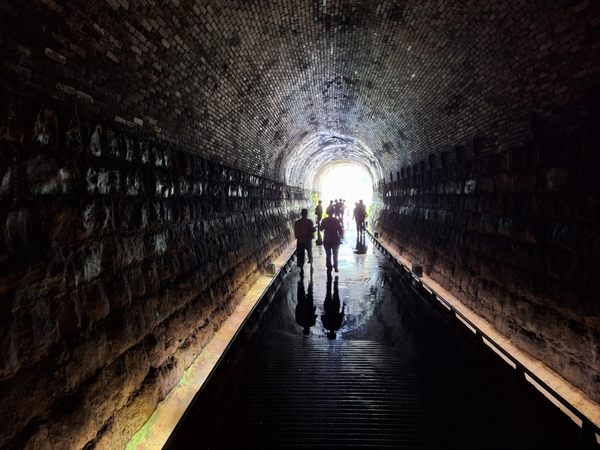Zaha Hadid Architects Looks to the Future With Shenzhen Science and Technology Museum
SummaryThe Zaha Hadid Architects-designed Shenzhen Science and Technology Museum has openedLocated in the Guangming District of Shenzhen, China, the museum project prioritizes environmental sustainability, targeting China's highest green building rating through energy and water conservationThe space offers vast exhibition halls, immersive theaters, research labs, and educational facilitiesThe Shenzhen Science and Technology Museum, designed by the globally renowned Zaha Hadid Architects, has officially opened its doors in the Guangming District of Shenzhen, China. The new spaceship-like institution is poised to become a landmark within the Greater Bay Area, a burgeoning hub of technological innovation with a population nearing 100 million.Designed as a striking, solid spherical volume facing the city, the museum extends westward into the adjacent science park, transforming into a dynamic sequence of outdoor terraces that overlook the greenery. These terraces serve as functional extensions of the interior galleries, which are organized around a grand central atrium, creating a vital new civic space. The building's futuristic aesthetic, a hallmark of Zaha Hadid's signature fluid forms, is further emphasized by its dual-colored stainless-steel skin, which subtly gradients from deep blue to grey, evoking the movement of celestial bodies.Spanning over 128,000 square meters, the museum houses an impressive 35,000 square meters of permanent and temporary exhibition halls and galleries. It also features 6,000 square meters dedicated to immersive theaters and cinemas, alongside 5,400 square meters of research laboratories, educational facilities, and an innovation center. The design prioritizes sustainability, targeting China's highest three-star green building rating through passive environmental strategies, including minimizing solar heat gain and utilizing a ventilated facade system. The museum also incorporates grey-water recycling and rainwater collection to reduce water consumption, and photovoltaic panels for on-site energy generation. The construction process itself leveraged advanced digital technologies, including BIM and 3D scanning, to ensure the precise realization of the complex architectural forms.Click here to view full gallery at Hypebeast
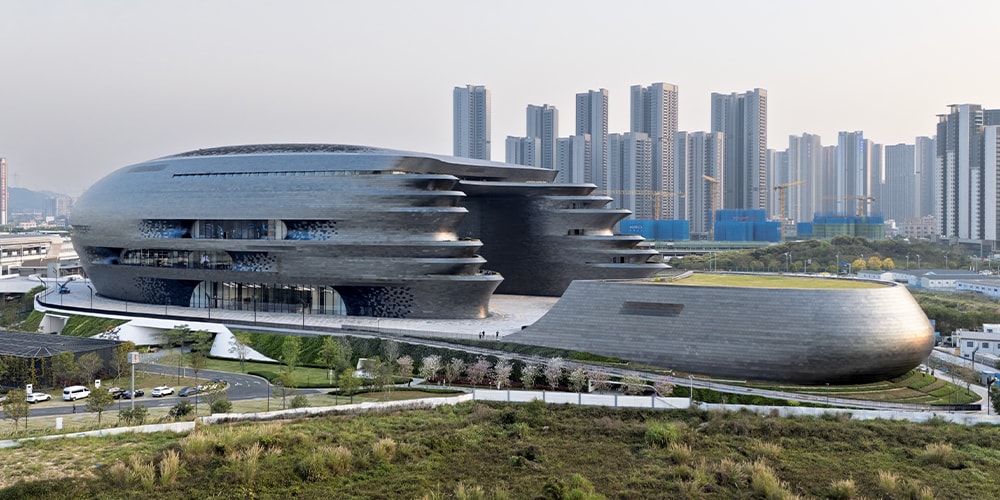

Summary
- The Zaha Hadid Architects-designed Shenzhen Science and Technology Museum has opened
- Located in the Guangming District of Shenzhen, China, the museum project prioritizes environmental sustainability, targeting China's highest green building rating through energy and water conservation
- The space offers vast exhibition halls, immersive theaters, research labs, and educational facilities
The Shenzhen Science and Technology Museum, designed by the globally renowned Zaha Hadid Architects, has officially opened its doors in the Guangming District of Shenzhen, China. The new spaceship-like institution is poised to become a landmark within the Greater Bay Area, a burgeoning hub of technological innovation with a population nearing 100 million.
Designed as a striking, solid spherical volume facing the city, the museum extends westward into the adjacent science park, transforming into a dynamic sequence of outdoor terraces that overlook the greenery. These terraces serve as functional extensions of the interior galleries, which are organized around a grand central atrium, creating a vital new civic space. The building's futuristic aesthetic, a hallmark of Zaha Hadid's signature fluid forms, is further emphasized by its dual-colored stainless-steel skin, which subtly gradients from deep blue to grey, evoking the movement of celestial bodies.
Spanning over 128,000 square meters, the museum houses an impressive 35,000 square meters of permanent and temporary exhibition halls and galleries. It also features 6,000 square meters dedicated to immersive theaters and cinemas, alongside 5,400 square meters of research laboratories, educational facilities, and an innovation center. The design prioritizes sustainability, targeting China's highest three-star green building rating through passive environmental strategies, including minimizing solar heat gain and utilizing a ventilated facade system. The museum also incorporates grey-water recycling and rainwater collection to reduce water consumption, and photovoltaic panels for on-site energy generation. The construction process itself leveraged advanced digital technologies, including BIM and 3D scanning, to ensure the precise realization of the complex architectural forms.





































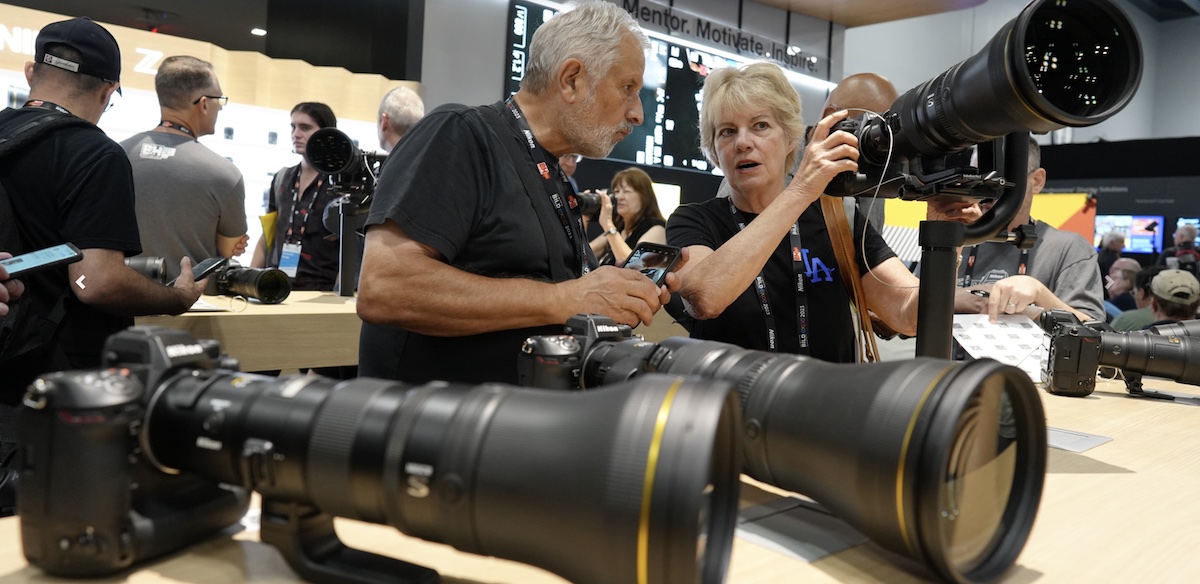





















































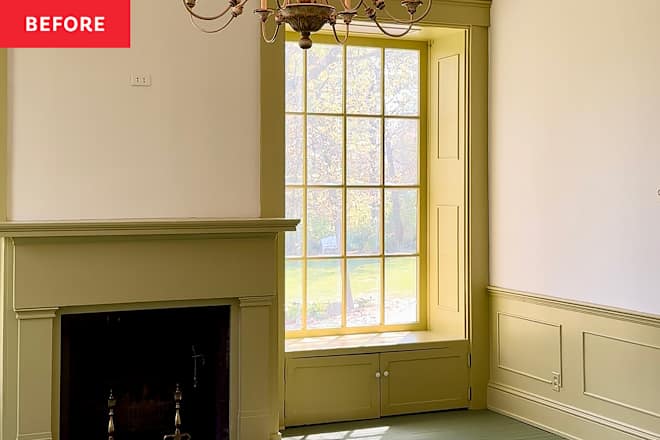















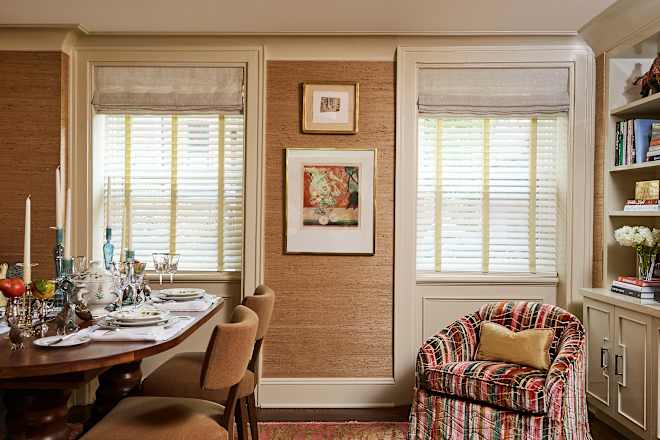









































































.jpg)













































